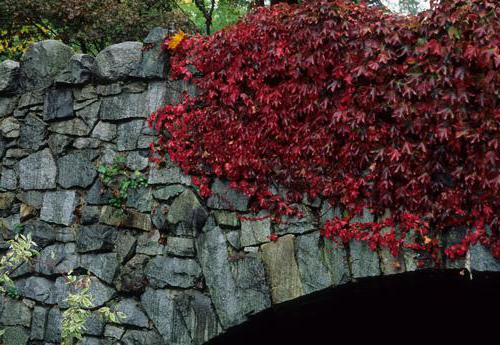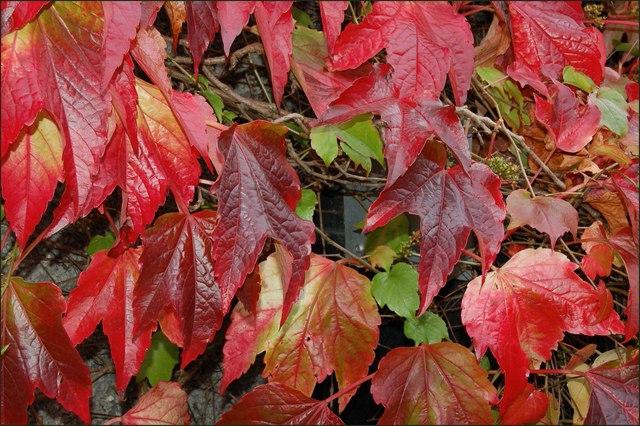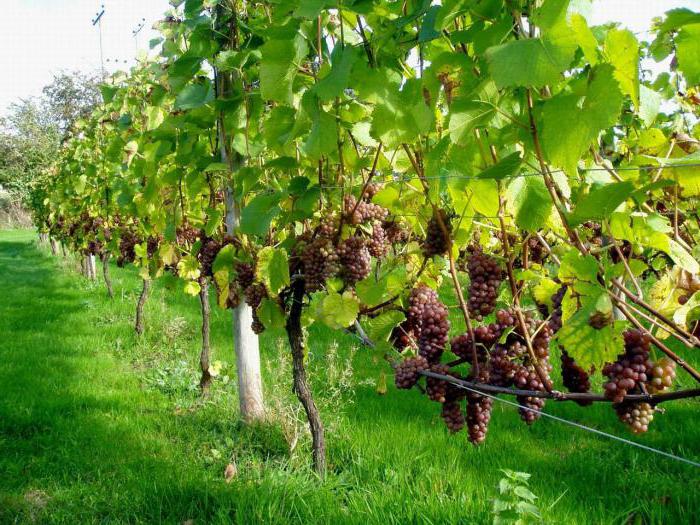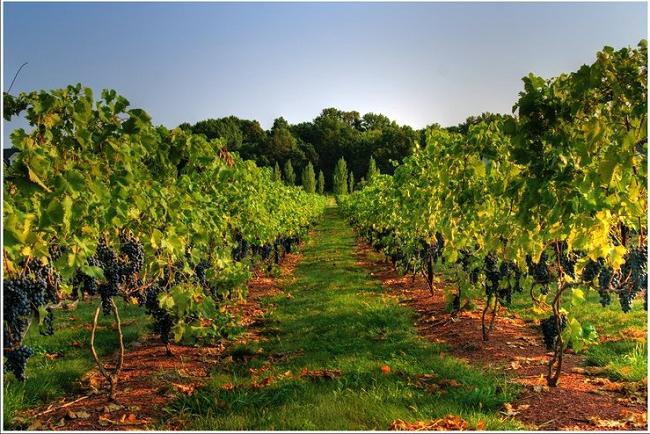Grapes decorative girlish: description, photo, planting and care
Grapes decorative - a plant, often and successfullyused in landscape design. After all, a cozy gazebo, completely covered with green wicker foliage, is a true salvation in the hot summer afternoon from the scorching sun. And stepped terraces, twined with grapes, is an echo of fashion for this plant, introduced by the rulers of past centuries.

In the nature of decorative grapesdistribution in the territory of North America, and cultivated it was the indigenous inhabitants of the mainland in 1622. It was from that time that the decorative liana firmly occupied its niche in the garden areas around the world.
In cultural gardening, there are 3 types of decorative grapes:
- triostrous ivy;
- attached;
- girlish five-leafed (virginian).
Decorative grapes as a component of landscape design
Lush, rich green, giving a refreshingcool and practically not requiring care, with competent intervention a person is able to create unique, bizarre forms and unexpected original solutions. And all this with a minimal investment of labor and costs.

The second name of grapes is decorative -"Girlish" or "virgin ivy". This is explained very simply: the flowers of the plant do not require pollination to form seeds. Girlish grapes in landscape design are an effective means of hiding the unsightly facade of a house or masking an old barn. This is an excellent plant for forming a "hedge": green, solid, original, perennial. However, there is a downside to the medal: such a climbing plant, according to many experienced gardeners, is able to destroy the foundation, and even the structures themselves.
Decorative grapes (girlish): the advantages of growing
Decorative (or five-stem) grapes has a number of advantages:
- attractive and original looks;
- can grow on any type of soil;
- actively expanding (in a year to 2-3 meters), forms a green tight curtain;
- grows both on solar plots and in the shade;
- is content with even a small patch of land;
- easily multiplies;
- resistant to diseases and pests;
- protects the walls of the building from wind, overheating, rain, dust.
Disadvantages of decorative grapes
The ability to quickly and actively grow can also be attributed to the shortcomings of this plant.

Maiden Grapes (photo above), growing nearconstruction, can easily run under the slate on the roof of its powerful shoots or penetrate and clog the gutter. In any case, for the owners of the site, this means certain destruction and material costs. Lush curly creepers during growth completely cover the windows in the room, creating total darkness. With such inconveniences one can easily cope if you control the growth of decorative grapes and shorten unnecessary shoots in time.
An equally important problem is the rootplant system. Capturing the underground space, it easily spreads in all directions and causes great damage to the cultures encountered on the way. Even the weeds under such a vine grow in small numbers or do not grow at all. Also it is worth taking into consideration that decorative grapes come to life somewhat later in the future of other plants and for a long time represents a dull sight from the confused, bare branches.
The location of the decorative grapes
Very beautiful looks decorative grapes,planted on the south side of the house. In the autumn period it is painted in scarlet, red, orange, purple tones and forms picturesque bluish-black berry bunches (unfortunately, inedible). The plant planted from the north side looks different and pleases the view of the dark green foliage until the onset of cold weather. In addition, in well-lit areas, the leaves of the plant are larger, and the coloring is more picturesque.
Decorative grapes: planting and care
In the care of decorative grapes unpretentious.It is enough to cut unnecessary whips in time and occasionally water the plant. The water consumption for each bush is about 10 liters. In dry hot weather, the supply of moisture should be increased. You can simultaneously fertilize the plant with nitroammophous or complex preparations, to which the liana will respond with active lush growth. During the summer it is recommended to remove weed plants, loosen the soil and hill for bare roots. It is favorable for the plant to mulch the soil with peat or humus, which is a 6-centimeter layer.

With the advent of spring, decorative grapes need to remove the frozen tips of branches, weakened and withered branches, as well as shoots that grew outside the area reserved for the plant.
Stages of planting grapes decorative
Grow decorative grapes on your siteis not particularly difficult. For planting it is enough to stab in the ground and pour. And then only have time to follow the growth of the plant and control it. If there is still a desire to plant decorative grapes according to all the rules, then you need:
- dig a hole of the corresponding size;
- mix soil with sand and compost;
- lay a layer of drainage to the bottom of the hole;
- pour a part of the soil mixture from above;
- place a stalk in the pit;
- fill up the remaining land;
- form an irrigation hole;
- it is good to water the stalk.
For planted plants, you can make a support or tie a wire, thereby directing the growth of grapes in the desired direction.

In the absence of support, the girl's grapes (photo) with suction cups on the ends of the antennae will grow, clinging to the slightest roughness on the walls.
Ways of reproduction of decorative grapes
Cuttings (twigs with 4-5 healthy kidneys),intended for the reproduction of decorative grapes, can be cut at any time. You can also multiply the decorative grapes with seeds, provided that the plants fully ripen, or by lapping them by digging them horizontally into the soil, leaving the tops with kidneys above the ground. It turns out: one wave in the soil, another - above it, and so on. A whip in the ground can be attached with a folded clerical clip or a regular hairpin.

Very convenient to propagate decorative grapesroot suckers. They are quite easily removed from the ground and landed in a new place for growing. Then girlish grapes, seedlings of which are already well rooted, need to be planted at a permanent place of growth in the previously prepared pits. The distance between plants is at least 1 meter.
Planting decorative grapes can be madein spring and autumn: the plant takes root equally well. For the winter, it can not be covered: it is quite frost-resistant. When frosting is very quickly restored by sleeping buds.
</ p>>







